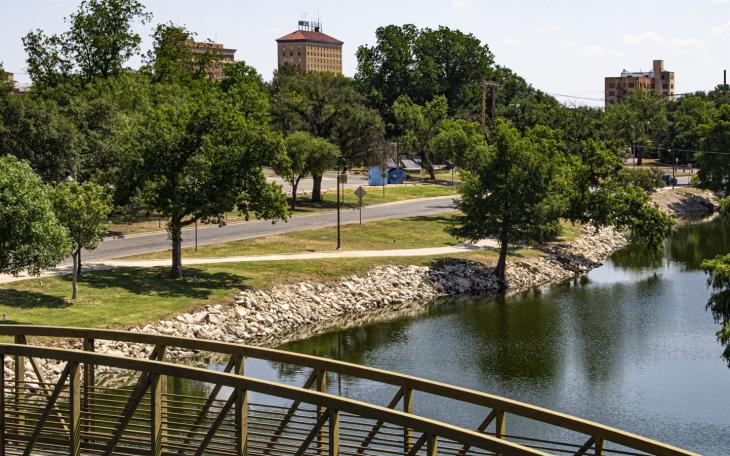SAN ANGELO, TX – The monstrous size of the Saharan dust cloud trekking from Africa to the Gulf Coast has made meteorologists' heads turn and has stirred up conversation on how this year’s health impacts from the plume could be more concerning than others in the past.
Over the past week, this vast expanse of dust, known as the Saharan Air Layer (SAL), has been called the "Godzilla dust cloud," as well as the "most significant event in the past 50 years," by some experts, according to The Associated Press. By Wednesday afternoon, the leading edge of the dust plume had invaded the airspace over the Gulf of Mexico, satellite imagery showed.
Satellites show two areas of concentration with the dust as the plume stretches from continent to continent. The first concentration now clouds the Caribbean, more than a week after a thunderstorm complex that had moved across western Africa kicked up the dust.
"Dust has been flowing off the coast of Africa for several weeks now, which is not uncommon," AccuWeather Senior Meteorologist and lead hurricane expert Dan Kottlowski said. "But the extent and concentration of dust currently in the Caribbean is by far very impressive."
"The depth of the dust, as measured in various places, suggests that this is one of the most concentrated areas of dust we have seen in the past several years," Kottlowski said, although he acknowledged that records of dust concentrations are not well established.
The bulk of the first concentration of dust reached Puerto Rico and the U.S. Virgin Islands on Monday, not just clouding the sky but turning it a milky white.
Visibility at the airport on St. Croix in the U.S. Virgin Islands dropped to 3 miles and was limited to 5 miles in San Juan, Puerto Rico. In past years, the SAL plumes have allowed 10 or more miles of visibility at the surface, according to Gabriel Lorejo, a meteorologist at the National Weather Service in San Juan.
Subscribe to the LIVE! Daily
Required






Post a comment to this article here: